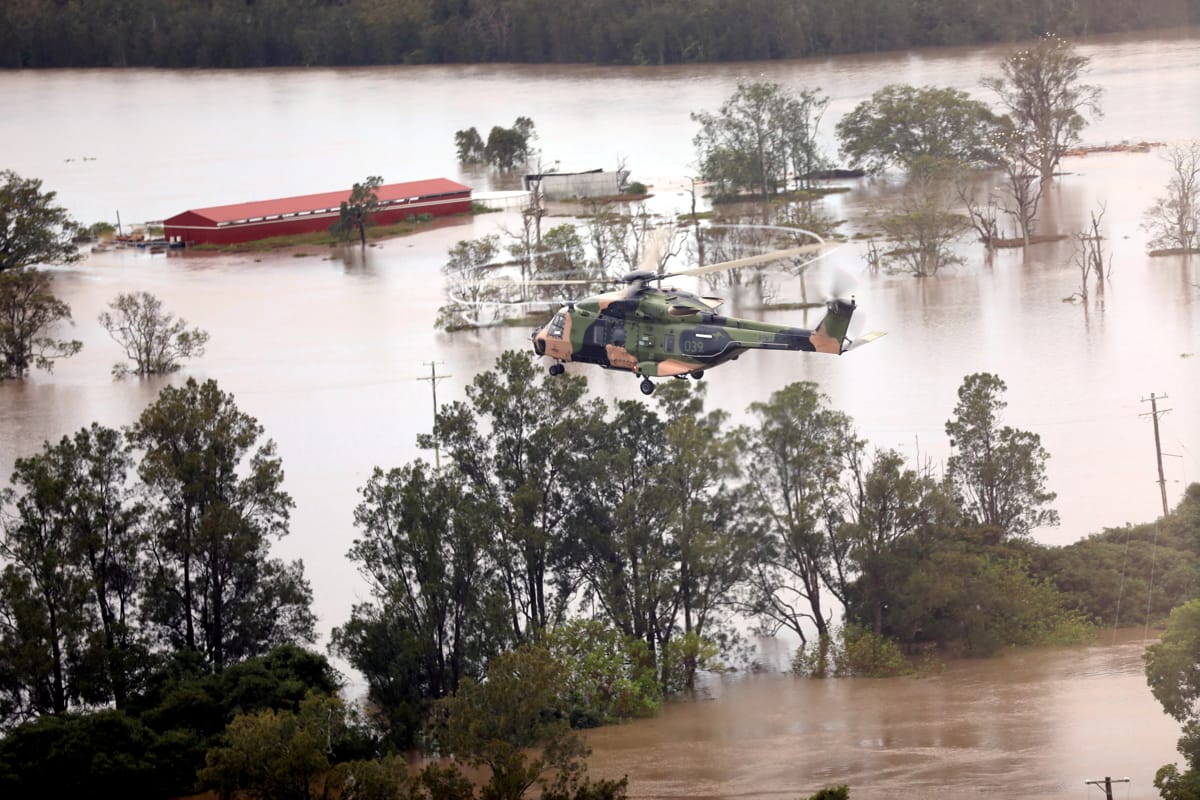The climate is warming. Ice is melting. Storms are brewing. We are at five minutes to midnight, with disasters set to increase in frequency and intensity.
Climate change is now widely accepted, including by the Australian Defence Force, as a national security risk – and not least because of the risk of increased disasters and ensuing resource drain. In short, it matters “who holds the hose”, to borrow the infamous remark of the then Australian prime minister during the 2019-20 bushfire crisis.
It is a common misperception, even among senior officials, that the Australian Constitution mandates disaster response as a state responsibility, with the federal government obliged to play a more limited role. The truth, however, is far more nuanced than that, and this matters for how the country manages disasters and the response to climate change.
How does the Australian Constitution divide power between state and federal governments?
The Constitution does divides lawmaking powers between state and federal levels to guarantee the existence of both tiers of government. This can be effective at ensuring checks and balances and the presence of localised government. In times of crisis, however, the division of power and responsibility between the Australian Commonwealth government and that of the Australian states can present both opportunities and challenges, including on the nexus between climate and national security.
The Commonwealth parliament in Canberra has what are called “enumerated” powers over specific subject matter. State parliaments have more general “plenary” lawmaking powers. This means for the Commonwealth parliament to pass legislation and for it to be valid, the subject matter of the legislation must fall within a “head of power”. For the most, these powers are set out in section 51 of the Australian Constitution (and complicating the issue, section 122 sets out a plenary power on territories).
Does the Commonwealth have any power over environmental management?
It is also true that the Constitution does not expressly grant the Commonwealth a power over environmental management, nor disaster response. However, there is – at the very least – an argument to be had as to whether the Commonwealth government could do more to act on climate change, environmental management, and disaster response through reliance on heads of power. This includes section 51(xxix), the external affairs power, which the previous Morrison government relied upon in 2021 to cancel the Victorian government’s memorandum of understanding with China over the Belt and Road Initiative.
Federal disaster response power could more controversially extend to section 51(vi), the defence power, or even what is known as the “implied nationhood power”. The implied nationhood power can allow the Commonwealth to make laws on subject matter “peculiarly” requiring a Commonwealth response on matters that cannot otherwise be carried on by the states. For example, and as noted in my new book National Security Law in Australia, the High Court has held laws purporting to respond to the global financial crisis and centenary celebrations to be supported by the implied nationhood power. While the idea has not been tested by the High Court, it might be possible for the Commonwealth to rely on this power to respond to disaster and climate change management, as well as other matters impacting on national security that are not able to be adequately responded to by the Australian states.

What happens if there are inconsistencies between State and Commonwealth laws?
Where there is an inconsistency between a valid state law and a valid Commonwealth law, section 109 of the Australian Constitution provides that the Commonwealth’s law will prevail. This circuit breaker has had significant consequences for Australian federalism, including in the context of environmental protection. For example, in the past, the Commonwealth government has been able to rely, for example, on international treaty obligations to pass laws under section 51(xxix) (the external affairs power) to overrule state law. The Franklin River dam case in Tasmania was a renowned example.
It is possible there is a section 109 argument to be had in relation to, for example, Western Australia recently passing environmental protection laws that reportedly “strip WA's environmental watchdog – the Environmental Protection Authority (EPA) – of the power to factor in carbon emissions when deciding whether to give the green tick of approval to some of the state's most highly polluting projects”.
So what?
While arguably the federal government could attempt to rely on its “implied nationhood power” to respond to national emergencies such as disasters and pandemics, the politics of federalism is that it generally doesn’t.
This allows for decentralised decision-making and autonomy among states (as can be seen, for example, in the responses of Queensland and Western Australia to the Covid-19 pandemic, which, some argue, saved lives). Yet it can lead to “buck-passing” and missed opportunities to develop meaningful national responses to challenges, such as water management and the climate emergency.
It is also true that section 119 of the Australian Constitution, for example, obligates the federal government to protect the states from invasion and “domestic violence” (such as riots, rebellion, terrorism or other violence of a domestic origin), but only “at the request of that state”. Importantly, however, that same consent requirement does not permeate all aspects of the Australian Federation.
The point is that “holding the hose” need not necessarily be an exclusive responsibility of the states and that there are opportunities for a more cooperative federalism, including on the nexus between climate change, natural disasters and national security.

